Comparison of the “Pillars of Creation” images taken by the Hubble telescope at different times
News about the Hubble telescope and viewing amazing photos on the subject riveted my eyes to two of his photographs, and encouraged me to write this mini-post in which I tried to convey admiration and surprise.
Everyone knows the famous Hubble photos - Pillars of Creation.

These photos have been shared for almost 20 years.
Rummaging a bit in Google, I did not find a detailed comparison of these two images that would be open to the general public, and in an easily accessible form.
Yes, I did not set the goal to delve deeply into the data, but decided to just watch, and at least feel like a scientist.
So, what happened on this stretch of sky in 20 years? I propose to admire and compare these two photos.
Under the cut is a big GIF.
Aligning the photo, I tried to navigate the faintest stars.
If we assume that they are not part of this system, but are much further away, we can conclude that they have moved less than others. Therefore, I used them as anchor points.
After going through several options of "fixed" stars, and experimenting with size and rotation, I got a pretty decent result.
At first glance, it seems that nothing has changed. Let's take a closer look.
In some places, inaccuracies in fitting the picture are noticeable, but in some areas the shifts are of a completely different nature.
The first thing that catches your eye is, of course, the displacement of stars. At least 7 move fast relative to the background (in the 4th picture there are two).
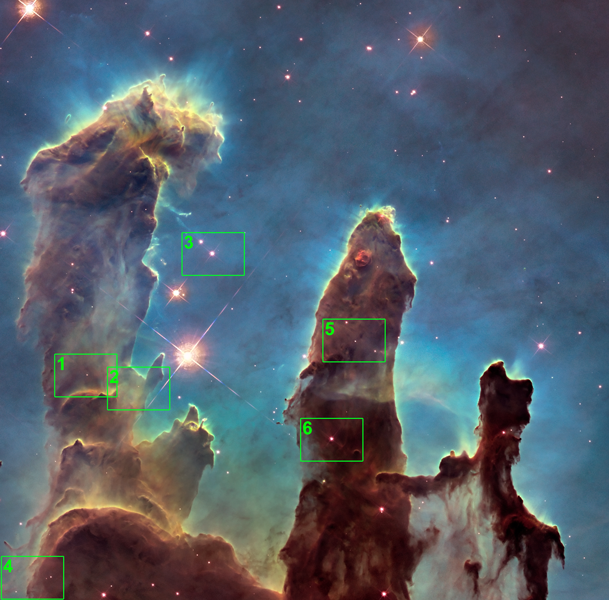
1.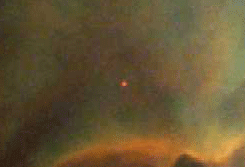 2.
2. 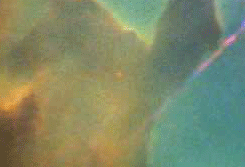 3.
3. 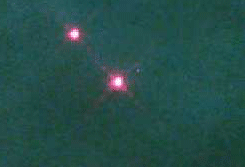
4.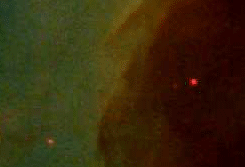 5.
5. 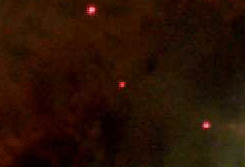 6.
6. 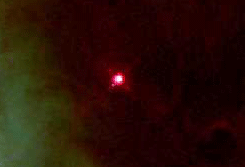
Image 3:
It is possible to imagine that the dim star is in orbit near the bright one (in the center). In this case, she has traveled such a “small” path that it takes her 200 years to complete one full revolution around the hostess. Or maybe she already made a few turns. Most likely, the star is not anybody’s satellite at all, but is much further.
A lot of updated photos and new bright points. But, these are not new stars that managed to erupt in 20 years. Firstly, the updated photo is much lighter, and secondly, its resolution is much better. In the photo of 1995, they simply were not visible.
Although, I want to believe that one of these points is indeed a newborn star.
The movement of individual parts of the nebula looks amazing.

1.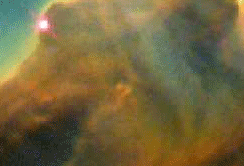 2.
2. 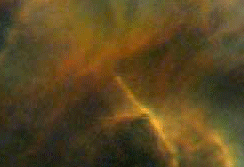 3.
3. 
But the greatest thrill is the global movement of the pillars! See how the rotation of the nebula mass around its axis is clearly visible, and this is not a defect when combined in the editor (look at the big gif):
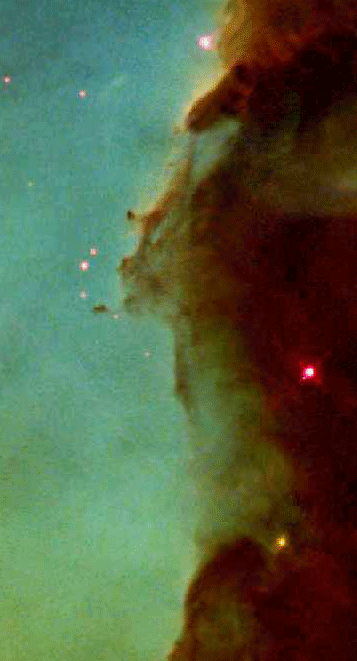
And finally, a noticeable extension of the top of one of the pillars. Mesmerizing!

I apologize for the flicker. If you make the gif slower, the effect is not so noticeable.
For those who want to make more discoveries - here is the original in two layers.
I will also be happy with the additions in the comments!
Everyone knows the famous Hubble photos - Pillars of Creation.

These photos have been shared for almost 20 years.
Rummaging a bit in Google, I did not find a detailed comparison of these two images that would be open to the general public, and in an easily accessible form.
Yes, I did not set the goal to delve deeply into the data, but decided to just watch, and at least feel like a scientist.
So, what happened on this stretch of sky in 20 years? I propose to admire and compare these two photos.
Under the cut is a big GIF.
Aligning the photo, I tried to navigate the faintest stars.
If we assume that they are not part of this system, but are much further away, we can conclude that they have moved less than others. Therefore, I used them as anchor points.
After going through several options of "fixed" stars, and experimenting with size and rotation, I got a pretty decent result.
Actually, a big GIF (5.6 Mb)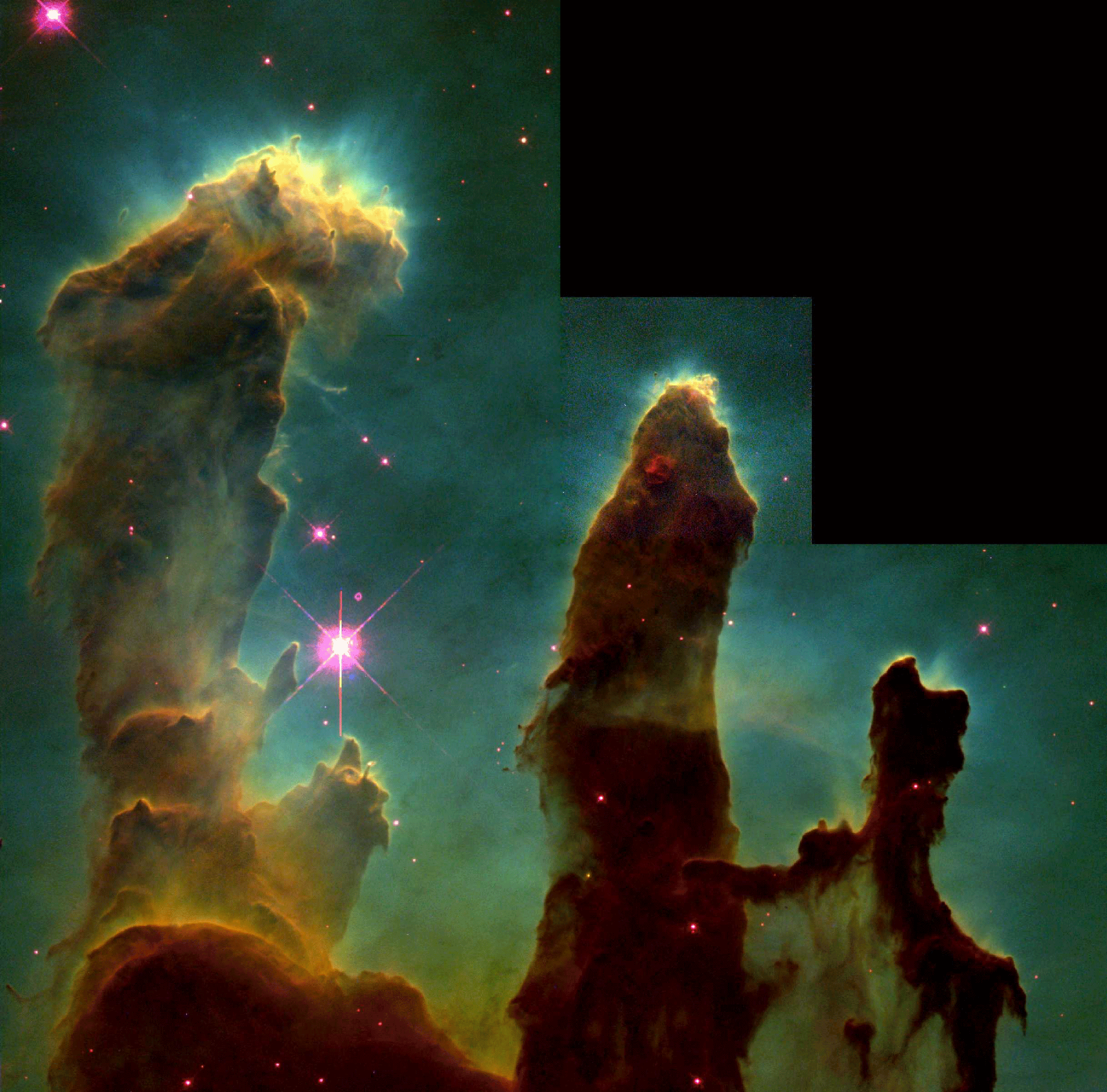

At first glance, it seems that nothing has changed. Let's take a closer look.
In some places, inaccuracies in fitting the picture are noticeable, but in some areas the shifts are of a completely different nature.
The first thing that catches your eye is, of course, the displacement of stars. At least 7 move fast relative to the background (in the 4th picture there are two).

1.
 2.
2.  3.
3. 
4.
 5.
5.  6.
6. 
Image 3:
It is possible to imagine that the dim star is in orbit near the bright one (in the center). In this case, she has traveled such a “small” path that it takes her 200 years to complete one full revolution around the hostess. Or maybe she already made a few turns. Most likely, the star is not anybody’s satellite at all, but is much further.
A lot of updated photos and new bright points. But, these are not new stars that managed to erupt in 20 years. Firstly, the updated photo is much lighter, and secondly, its resolution is much better. In the photo of 1995, they simply were not visible.
Although, I want to believe that one of these points is indeed a newborn star.
The movement of individual parts of the nebula looks amazing.

1.
 2.
2.  3.
3. 
But the greatest thrill is the global movement of the pillars! See how the rotation of the nebula mass around its axis is clearly visible, and this is not a defect when combined in the editor (look at the big gif):

And finally, a noticeable extension of the top of one of the pillars. Mesmerizing!

I apologize for the flicker. If you make the gif slower, the effect is not so noticeable.
For those who want to make more discoveries - here is the original in two layers.
I will also be happy with the additions in the comments!
